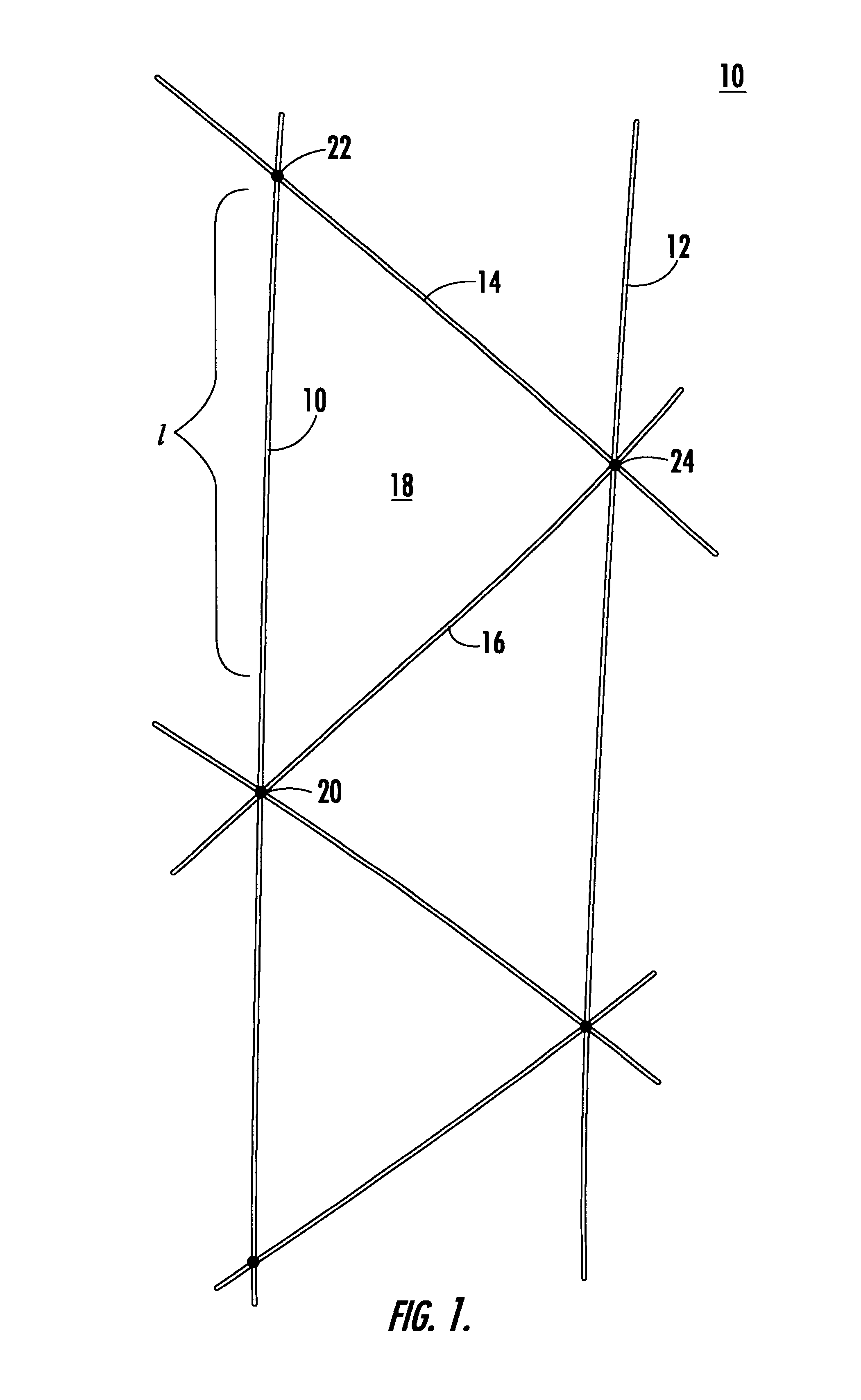Open-lattice, foldable, self-deployable structure
a self-deployable, foldable technology, applied in the direction of flooring, transportation and packaging, cosmonautic vehicles, etc., can solve the problems of difficult application of self-deployment to ultra-low density requirements of lightly loaded structures, mechanisms that provide the deployment become parasitic mass, and general structural inefficiency of hinge or latch mechanisms of these mechanical systems
- Summary
- Abstract
- Description
- Claims
- Application Information
AI Technical Summary
Benefits of technology
Problems solved by technology
Method used
Image
Examples
Embodiment Construction
Structure 10, FIG. 1 includes spaced longitudinal members 10, 12 and spaced diagonal members 14, 16 as shown spanning between longitudinal members 10 and 12. Thus, structure 10 is an open-lattice structure including open cells such as cell 18 bounded by portions of longitudinal members 10 and 12 and diagonal members 14 and 16. There are some means for joining diagonal members 14 and 16 to longitudinal members 10 and 12 at selected cell boundary intersection points 20, 22, and 24. Such means include adhesives, pins, rivets, and the like or as discussed infra respect to FIG. 12.
The cells may take the shape of an isosceles triangle as shown for cell 18 with apexes 20, 22, and 24 each including the intersection of two diagonal members 14 and 16 with a longitudinal member 10, 12 although this is not a necessary limitation of the present invention.
NASA Technical Memorandum 78687, hereby incorporated herein by this reference, discusses the mechanical characteristics of such structures in g...
PUM
 Login to View More
Login to View More Abstract
Description
Claims
Application Information
 Login to View More
Login to View More - R&D
- Intellectual Property
- Life Sciences
- Materials
- Tech Scout
- Unparalleled Data Quality
- Higher Quality Content
- 60% Fewer Hallucinations
Browse by: Latest US Patents, China's latest patents, Technical Efficacy Thesaurus, Application Domain, Technology Topic, Popular Technical Reports.
© 2025 PatSnap. All rights reserved.Legal|Privacy policy|Modern Slavery Act Transparency Statement|Sitemap|About US| Contact US: help@patsnap.com



